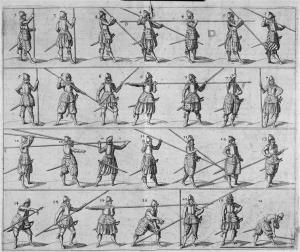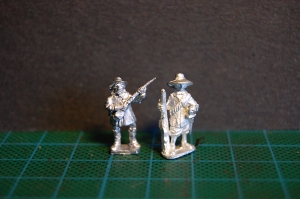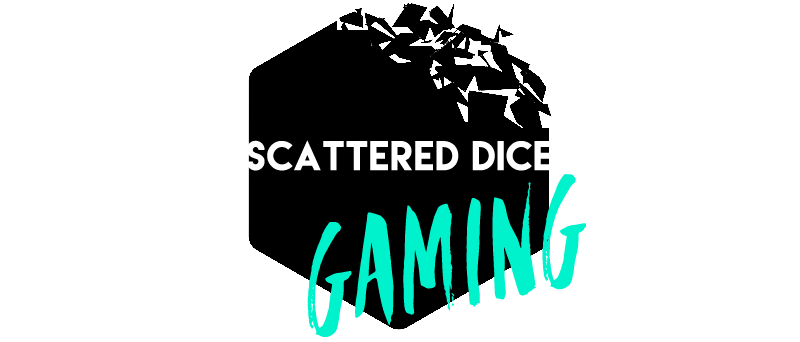I’ve always been fascinated with the 17th century. Fascinated by the somewhat bizarre meeting of old and new ideas and technology that escalated into a number of devastating conflicts which would change the social and political life of the early modern European states. Not to mention the flamboyant baroque fashion, culture, and arts – and how it impacted the very way people thought of themselves in relation to earlier periods in European history. This historical process can easily be summed up in, and approached through, the Thirty Years War that ravaged the European continent for almost half a century. The book Ofredsår (Years of discord or Unpeaceful years) by the Swedish historian Peter Englund, is a great piece of literature that covers everything from the fates of career seeking officers of the burgeois, to the hardships of the German peasantry whose lands were plagued by foreign states that used the war torn Empire to settle off-shore disputes. Another inspiring piece on the subject is the film Alatriste by the film maker Augustín Díaz Yanes, that opens up with a fantastic scene of Spanish mercenaries raiding a Dutch war camp. Not to mention it’s great soundtrack, and coreography of late night rapier duelling in Madrid. Judging by this wall of text, declaring my special interest in the period, it was only a matter of time until I bought myself some 17th century figures to explore the world of pike and shotte wargaming. In this article I’m going to take a look at some neat 17th century soldiers cast in 15mm scale, comparing the products from Totentanz Miniatures and Wargamer Games Studio which sell the official miniatures for the game By Fire and Sword.

Pricing
There are several ‘specialized’ troops (like the Ottoman Janissaries and Polish Winged Hussars) that can be viewed as iconic of the period by some, but to make this review as universal as possible I’ve settled to compare two regular (or rather inter cultural) types of soldiers – namely the musketeers, pikemen, and light horse/cavalry. Whether they formed foreign mercenary or conscripted units these troops served in almost every army that participated in the war in central Europe. While Totentanz sells their unit packs of 8 minatures a bag, Wargamer Games Studio organize most of their packs based on half- and whole regiments which makes comparing the price/model a bit difficult. Nontheless it is possible to compare an estimated price based on a purchase of roughly the same amount of miniatures. The Imperial ‘half regiment’ pack (18 miniatures) from Wargamer comes at a price of 13 euros, and holds 6 pikemen and 12 musketeers which means that you pay roughly 0,72 euros/model. If you try to put together an equal ‘half-regiment’ from Totentanz you will have to buy one pack (8 miniatures) of pikemen and one pack (8 minatures) of musketeers both at 4,25 euros a bag, for a total of 16 miniatures. This boils down to a price of 0,50 euros per model, but you have to take into account that you’re missing two models to make both ‘half regiments’ equal in size. Still, if you were to buy another pack of infantry from Totentanz you would end up with 24 miniatures while only paying a total of 12,50 euros compared to Wargamer’s price of 13. So in conclusion, Totentanz Miniatures is the cheaper way to go as you will stack up on left over miniatures that you can either use to build additional units or just cram onto your existing bases to flesh out the units with more bodies and create a thicker forrest of pikes!

Now something needs to be said about the pricing of 15mm models for those of you who are unfamiliar to this frontier. As a seasoned fan of 28mm models it is easy to be fooled by the ‘cheap’ price tag of smaller tin soldiers. Games that use 15mm miniatures are often based around larger scale battles between regiments, batalions and even brigades – this means that even though it is de facto cheaper to put together a playable force than, for example, 1750pts of Space Marines, you will still have to buy several packs to get playing. Most 15mm games also use a multibasing system where several soldiers are standing on the same base – additional bases (or ‘stands’) then make out the size of the unit – which means that you can’t just get away with buying a single pack of each troop type. Nevertheless, prices for 15mm miniatures are lower than other scales and I assume that the sculpting and casting process are also a whole lot cheaper/faster as a result.

Moving on to the rockstars of the period and their four-legged surfboards. Cavalry in general saw a heavy decrease in use during the period and, although still present as a vital part of the army, their role had to be re-adapted to survive the new threats of muskets and pikes. Cavalry was often deployed to counter enemy cavalry and once the flanks were secured they usually went after the artillery positions or charged in to cut down broken infantry formations. Survivability and freedom of movement had to be negotiated depending on their battlefield role, but generally light cavalry had nothing but a breastplate (hence the name Cuirassiers) for protection. Most were equipped with swords and a brace of pistols which could be used both for skirmishing and as maces in close combat.
Wargamer sells a pack of 6 ‘Imperial Cuirassiers’ for 9 euros which means that you pay 1,50 per figure. Tontentanz on the other hand sells packs of 3 Light Cavalry (either regular or command figures) for 4,25 euros a pack, which means that the same unit will come down to a total of 8,50 euros or 1,41 euros/model. Once again Totentanz offers the same type of miniatures but at a reduced price. Since their packs are organized into either regular or command figures, you can choose freely whether you want to expand your existing regiments with additional bases or create new ones.

The sculpts
It is now time to turn our attention towards the miniatures themselves. How is the sculpting, the attention to detail, and ‘historical correctness’? Both lines of miniatures seem to be roughly the same height although Totentanz look a bit over-sized at a first glance (which I will return to later). The Wargamer models have somewhat fiddlier parts sculpted like the muskets and swords for example. This worries me as they tend to bend a lot and might break off after some use. Mould lines are few on both sculpts which means that cleaning them up should be a quick job. This is always nice since you have to prepare around 30-40 soldiers to form a proper regiment. At closer inspection I have to say that the Totentanz miniatures come out on top. The faces are much more crisp and if you compare other details like the the hands of the models, it is clear that the Wargamer ones seem to have just been slapped on around the stock of the gun during the scuplting process. This, in my opinion, lowers the value of the model as the proportions and anatomy looks a bit weird. It is impressive to see that even the moustaches are finely sculpted on the Totentanz miniatures, and I’m convinced that details like these will take paint and washes very well to make the model stand out once painted. You could get away with mixing models from both companies since they’re about the same height and their fashion/clothing look similar, but I think the Totentanz line is superior in relation to it’s attention to detail and the quality of the sculpts.

There’s also a noteable difference between the cavalry sculpts of the two companies. The Wargamer horses have quite a lot of flash that requires clean up in order to prepare the models compared to Totentanz cavalry. The Wargamer horses are also notably smaller than the Totentanz ones, if this has to do with different breeds of horses serving as inspiration for the sculpters, or if it’s a result of conscious down-scaling is hard to say though. Once again the details of the Totentanz minatures are way better. The riders of the Wargamer models look very messy and static which leaves a lot to the imagination of the observer. Saddle pouches, riding boots and the iconic wheel lock pistols (holstered in front of the rider’s thighs) are much more emphasized and visible on the Totentanz models. I think this pirmarily has to do with the fact that these details were sculpted as part of the rider and not the horse (as with the Wargamer models) which makes the equipment stand out much more once the minatures are assembled.
I mentioned that some of Totentanz models ‘look bigger’ than they actually are. This is due to the fact that some clothing and equipment are much more close to their true ‘historical’ scale than on the Wargames models. Take the 17th century hats for example. There are plenty of paintings and manuscript drawings, as well as surviving examples of clothing at museums (we have some very wide brimmed hats at the Vasa-museum in Stockholm, Sweden) that support the idea that some hats were really baroque in size to say the least. I think this gives the Totentanz miniatures a lot of flavour and adds to their historical corectness rather than making them look silly.

Final verdict
Both Wargamer and Totentanz 15mm models are compatible with each other thanks to the fact that they are the same height – although you have to be cautios when basing Totentanz musketeers next to Wargamer infantry as the size of some of the hats might give half your army bad self-confidence! This also means that there won’t be that much of a difference if you and your friends have chosen different ranges for your Thirty Years War armies. In my opinion the Totentanz miniatures are superior to the Wargamer ones in every category – both pricing and sculpting. That is not to say that the Wargamer models are bad, they offer an easy and good enough way to buy and put together complete regiments for your 15mm Thirty Years War games. If you have the patience to nitpick and mix a selection of unit packs though, the Totentanz miniatures will come out on top in terms of looks and quality. I’m looking forward to painting these miniatures and delve into the world of 17th century historical gaming, as some of the people in my area are interested in the period as well. I accidentaly ran into the writer of the ruleset Liber Militum Tercios some time ago and bought myself a copy which I will review thoroughly at a later point. For now, I’ll leave you with some pictures of a beautifully sculpted officer on horse (Totentanz miniatures) and a snap of when I played around with basing options for my pike and shotte regiment.
Until next time, take care!





Hello,
Thank you for this comparision. Quite interesting to read, as I haven’t got any of Totentanz miniatures yet.
In your pricing comparision you haven’t mentioned that with Wargamer boxes and blisters you get bases, pikes, lances and banners. I usually change bases to thicker made from HDF, but banners and spears are great addition which are worth this price difference.
Totentanz miniatures, beautifully sculpted as I can see on pictures, have one crucial fault – they are absurdly innacurate. Cossacks with baggy trousers? It’s 17th century, not 19th! Same with Commonwealth cavalry. It seems that sculptors have used one Osprey book as a reference and rest is made “how the author feels was right”. In my opinion it’s like putting some Panthers for African campaign during IIWW – fancy, playable, but absolutely not historicaly viable.
I’m fully aware that Eastern Europe is quite unknown to the West – mainly due to lack of literature. But it’s quite sad to treat Cossacks on the same terms as Scots in Braveheart 😦
Thanks for your comment, and yes, I totally forgot to mention the bases and pikes included – sorry for that :S
As I mentioned in the introduction, the review was aimed towards more generic units as I don’t know that much about eastern troops and material culture at the time, but I will definitiely read into it now that you have pointed out some general guide lines. Do you recommend any books where to start if I’d like to delve into the cossack history – so I don’t have to go for Osprey?
Once again, thanks for your pointers, 15mm 17th century gaming is new to me, even though I’ve studied the period for some time.
F
Hi Kadzik, our sources are mainly contemporary XVI and XVII gravures and paintings, both Ukranian and Turkish. Beside documents and pictures from Ukranian and Polish reenactment groups. I did not realize we were making so big mistakes. At least be sure we did not take just an Osprey as documentation source.
Since there is yet miniatures to be sculpted for this range, any help will be really welcomed.
My address is jsm@totentanz-miniatures.com
BTW, I have a lot of S&F figures my own and I like them a lot, specially the characters. Great sculpts.
🙂
Reblogged this on Totentanz Miniatures and commented:
A great comparative review of our miniatures
Thanks for the reblog and the comment!
Cheers!
Regarding Wargamer miniature quality. I’ve bought several sets (3-4 box at once), from Wargamer (once Cossacks, once Muscovites, sth like 1-1,5 years later). Sold all of them after couple of days. Miniatures were poorly cast, their overall quality was quite low. Sometimes miniatures looked as being sculplted in complete different styles (I mean for example, one was bulky, the other one was more in skinny style, the difference was easily noticeable). Their horse quality is especially poor.
I bought a rescuplted cossack ‘molojtzy’ pack like a year ago, it looked really fine (if other packs were the same quality, I would be playing with Wargamer cossack army atm). Problem is that with this range it’s impossible to predict whether the quality of other packs will improve, stay the same, or deteriorate. ATM most packs I’ve inspected are kind of low quality, especially compared to other contemporary miniatures. Regarding pricing … please check how much does a medium artillery piece (single one) cost. yeah I know it comes with a resin base. Still, it’s rather ridiculous. Other sets are no cheap either.
Regarding Totentanz miniatures. They are very well sculpted and cast. My only problem with them is that the horses are rally big. And I mean really big 🙂 I’ve never seen horses being that big. Otherwise it’s a great, contemporary (in terms of quality and especially in diversity), range. Well sculpted, broad. range. Miniatures are little too skinny to ma taste, but I am biased.
Another excellent article! I’ve not come across Totentanz 15s but I love Wargamer 15s. The horse sculpts can be a bit bland nut the faces are so characterful I would forgive them anything!
Thanks a lot for reading up on this old comparison. There sure are gems in the Wargamer sculpts as well – this was a genereal comparison so maybe not 100% fair as one needs to examine the whole range.